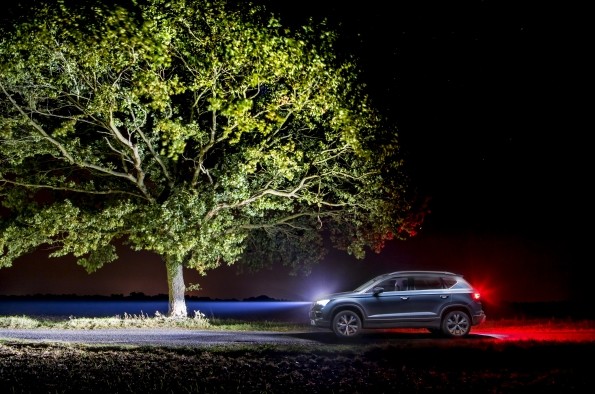
Thu, Oct 22, 2020 9:40 PM
- As the clocks go back on 25th October, the shorter days will mean more trips are made when it is dark
- While 29 per cent of drivers admit to getting nervous driving at night-time, 31 per cent are likely to entirely avoid driving in the dark
- Most drivers who do not like driving when it is dark say they worry about reduced visibility
- SEAT’s latest LED lighting technology provides almost double the luminosity of standard LEDs Nearly a third (29 per cent) of UK motorists – over 14 million* drivers – get nervous when driving in the dark according to new research by SEAT UK.
With the days getting shorter and the clocks due to go back on 25th October, the lack of daylight hours means most drivers will have to make more trips in the dark.
The survey of 2,000 motorists** also revealed that 31 per cent of drivers actively avoid driving in the dark if possible. Of those who said driving in the dark makes them nervous, over two thirds (68 per cent) said this is because they do not like having lower visibility.
Perhaps surprisingly, 18-24-year olds (37 per cent) are most likely to feel nervous about driving in the dark, while experience counts, as only 25 per cent of over 55s have concerns.
London drivers (40 per cent) are significantly more likely to get nervous when driving in the dark, and are more likely to avoid getting behind the wheel when it is dark (43 per cent), followed by motorists from the West Midlands (34 per cent).
However, drivers in the South East are the most comfortable taking to wheel when the night has drawn in, with only 25 per cent saying they would avoid driving when it is dark.
Lighting technology has advanced greatly recently, with auto-dip functionality and LED light systems being adopted by SEAT. However, traditional halogen lights are still present in the majority of the UK’s car parc.
The luminous efficiency of SEAT’s latest LED bulbs mean they provide almost double the luminosity (900 lumens versus 550 lumens) of standard LEDs and even more so than halogen bulbs. The white light of an LED also allows drivers to see further into the distance.
Throughout the design of every new SEAT model, which can have up to 300 individual LED light sources that last 10,000 hours, its Design & Lighting team conducts over 300 3D light simulations to deliver the best possible performance in any environment.
Most SEAT vehicles also benefit from auto-dipping headlight technology, which ensures the vehicle won’t dazzle oncoming traffic. The forward-facing camera will automatically dip full-beam headlights when a vehicle is detected, before returning to the full-beam position once the road ahead is clear, ensuring the best visibility for the driver.
SEAT has also published some tips on driving safely in the dark, while you can find out more about SEAT vehicles and its technology, by visiting: https://www.seat.co.uk/







